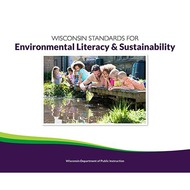Byrd Polar Research Center Climate Model Simulation
(View Complete Item Description)This set of animations and interactive simulations from the Byrd Polar Research Center at Ohio State University helps students develop an understanding of models used to understand the Earth system. Students consider the types of data that need to be included in a climate model, looking at inputs, outputs, and variables. The animations show how data is calculated for grid cells and assembled into a comprehensive model.
Material Type: Simulation




















